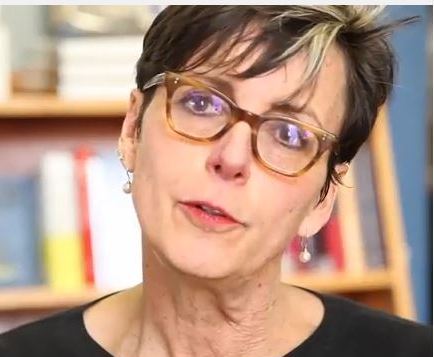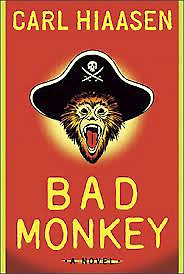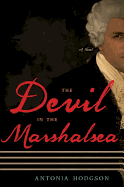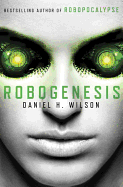
Dorothy L. Sayers was one of the greatest mystery writers of the 20th century. Her most notable creation was the aristocratic, eccentric sleuth Lord Peter--and later, Harriet Vane, the hyper-intelligent writer of detective novels who would become Lord Peter's wife. In 1936, Sayers abandoned the series. After her death in 1957, a partial manuscript and notes for a Lord Peter novel--what would become Thrones, Dominations, were found. It wasn't until many years later that Sayers's literary trustees commissioned Jill Paton Walsh--at the suggestion of Hope Dellon, an editor at St. Martin's Press--to complete the novel, which was published in 1998.
Walsh, the Booker Prize-nominated and Whitbread Prize-winning author of many novels for adults and children, has since written three additional books in the Lord Peter Wimsey series, including A Presumption of Death and The Attenbury Emeralds. In The Late Scholar (published by Minotaur), Peter and Harriet once again return to the page, post-World War II. In this installment, Peter is asked by his alma mater, St. Severin's College, Oxford University, to help resolve a dispute involving a valuable rare manuscript that needs to be sold in order to raise funds. But when the clever couple arrive at the college, they are faced with a string of mysterious deaths of faculty members.
Were you always a fan of Dorothy Sayers's work? What was your first experience with her writing?
My first experience with Sayers's work was when I was about 14 years old. I read Even the Parrot, a book for children, and managed to like it, though it's very patronizing. Then I moved on and fell in love with Lord Peter. When I read Strong Poison, the first Lord Peter book that features Harriet Vane, I noticed the unusual attitude of Lord Peter to a clever woman. I gave him my heart at once, and he helped inoculate me against the attentions of the men in my generation who wanted a woman chiefly to iron their shirts.
 Were you intimidated by taking over the writing of the very successful Lord Peter series?
Were you intimidated by taking over the writing of the very successful Lord Peter series?
Yes, of course, I was intimidated... I still am. But it has been an irresistible challenge to my technical skills.
With Thrones, Dominations, you are considered a "co-author" with Dorothy Sayers. Were the notes she left behind easy to follow in finishing the story?
The materials left by Sayers consisted of about one-fifth of the length of the finished novel, in chapters not numbered in order. There were several versions of some of the scenes. There was a plot diagram, down a single page, showing a line for Peter and Harriet and a line for Murderer and Victim. It was annotated with the words "Moves and countermoves as many as may be necessary" and "little bump of emotional development leads to solution." The written part left behind did not get as far as the murder. It was not easy to decipher.
How much influence do the literary trustees of the Dorothy Sayers Society have over the content of each book? Have they ever asked you to rework or rewrite parts of the story?
The trustees are lawyers advised by a literary agent. They have not offered any literary comment or advice, and I would not agree to work under such supervision. But the publisher also has discretion to publish or not to publish, and I accept editorial advice from the publisher as I would with a work entirely my own.
How do you research each book, especially The Late Scholar, which is set mostly on the campus of your alma mater, Oxford University?
Each book is different. They all require some research into the historical setting. The Late Scholar needed very little research, just some checking, because it is set somewhere in 1952-1953, and I went to Oxford in 1955. Peter's life and mine nearly overlap there.
What's the most challenging part of continuing the series? What's the most enjoyable and rewarding?
Writing about someone else's characters imposes a duty to correctness about what is already written about them, as though they were real people. Peter is the most entertaining man possible to imagine, talking in my inner world. He's just fun.
Do you have a favorite book in the Lord Peter series?
Gaudy Night is my favorite--it would be, it's about Oxford, and it's about women with professional careers. But I think the best of the series is The Nine Tailors, even though it had no Harriet Vane for me to identify with.
How hard is it to keep updating the series with recurrent characters, now aging, and moving into a more contemporary, post-World War II era?
It's easier, actually, than writing about characters who do not grow and change. Characters need to be real to me before I can make them real to anybody else, and real people change over time.
Why do you think Lord Peter and Harriet Vane have gained and retained such a loyal and devoted following throughout the years?
Peter is very unusual in needing an intellectual equal for his wife. I can think of two others in literature: Benedict in Much Ado About Nothing and Ralph Touchett in A Portrait of a Lady. Sayers produced a picture of a deeply desirable relationship between a man and a woman--clever, passionate and mutually respectful.
If someone has never read a Lord Peter novel, which one do you suggest they read first? And what do you foresee for the future of the Lord Peter series?
I'd suggest Strong Poison--if someone likes this book, they will like them all. And in terms of Lord Peter's future, he seems to be immortal. Really, doesn't he?
Will there be another Imogen Quy novel? Also, will you write another children's book?
Yes, I do plan to return to the Imogen Quy series. I would also love to get a good idea for another children's book. But my own children are now in their 50s, and my grandchildren are growing up in Australia. I haven't enough contact with children to know in my bones what they like reading... just the same, I'd grab the chance if something promising occurred to me.
If you could meet Dorothy Sayers, what would you like to say to her?
I would be rather afraid of her--such a sharp and clever woman. But I would ask why she abandoned Thrones, Dominations. --Kathleen Gerard, blogger at Reading Between the Lines
Jill Paton Walsh: The Legacy of Dorothy L. Sayers
 The title, Howorth explains, was "borrowed from a song by the late Townes Van Zandt, with the blessing of his son, J.T., also a great musician. It's a lovely, simple song about sadness, and trying to escape it."
The title, Howorth explains, was "borrowed from a song by the late Townes Van Zandt, with the blessing of his son, J.T., also a great musician. It's a lovely, simple song about sadness, and trying to escape it."



 Were you intimidated by taking over the writing of the very successful Lord Peter series?
Were you intimidated by taking over the writing of the very successful Lord Peter series?













